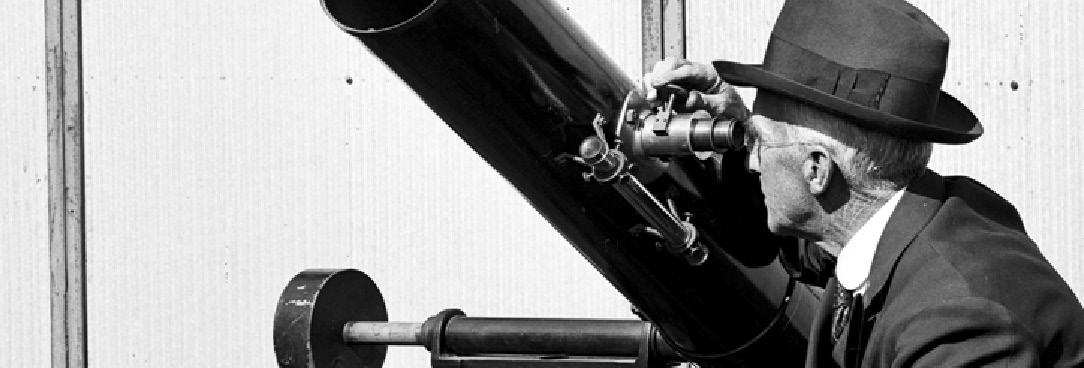Last updated:
One of the pleasures of editing a journal like Provenance is encountering new approaches to researching archives. By surveying the correspondence records of the City of Melbourne, Andrew J May, Stephen Banham and Christine Eid have sought to draw attention to the often overlooked features of these letters from far and wide. Their article, ‘Paper ambassadors: letterheads and the iconography of urban modernity’ opens our eyes to the graphic design of the humble genre of customised stationery, as a conduit for some of the earliest examples of what we now call ‘branding’. The dazzling array of letterheads that the authors discuss provide insights into the urban history of Melbourne, the concerns of its citizens and business people, and the miniature ideologies that they capture and transmit in visual form.
In ‘Playing the Ghost: Ghost Hoaxing and Supernaturalism in late Nineteenth-Century Victoria’, David Waldron has used public records to help understand the motivations of people who engaged in the bizarre practice of dressing up as ghosts to scare people. This curious phenomenon on the Victorian goldfields coincided with the popularity of spiritualism and followed similar trends in Britain. Strange individuals and happenings are explored through newspaper reports and public records to exhume one of the true behavioural oddities that emerged at a time when reason and progress were supposedly on the march across the world.
Through the records of the Melbourne and Metropolitan Board of Works (MMBW) Lee Andrews tells the story of the development of one of Victoria’s most enduring and inspirational tourist attractions in her article ‘Maroondah Reservoir Park: the creation of a monumental landscape’. Constructed as part of the MMBW’s experimental closed catchment policy, the park sought to compensate the Victorian public which lost access to water catchments with provision of adjacent landscaped public parkland. Through records of MMBW activities, it is possible to understand how Hugh Linaker, one of Victoria’s foremost landscape designers and tree planters, succeeded in creating a truly ‘monumental landscape’ – one of the best parks ever designed for public purposes in Victoria.
In their article ‘The Scots at Springdallah’, Jan Croggon and Joan Hunt use public records and other sources to reconstruct an understanding of the now-dispersed community of Springdallah and the Scottish immigrants that thrived there prior to the great upheavals of the goldrush period. From pastoralists to mining families, intermarrying and sometimes sharing similar cultural backgrounds, the Scots made an significant contribution to community life in this little-examined period of Australian history.
In the Forum section this year, Lee Hooper tells a sad and disturbing story from 80 years ago about a man suffering from mental illness who killed his first wife but was then released from an asylum with devastating consequences. ‘Preparation for Death: the story of Francis O’Brien, Mildura High School Headmaster and family annihilator’ tells the story of Francis O’Brien who on 28 May 1934, slit the throats of his second wife, their three children and then himself. Upon investigation into the circumstances surrounding the familicide, police discovered that this was the same Francis O’Brien who killed his first wife with a hammer 10 years previous while he was Headmaster at Mildura High School. Only a few years after the disastrous events that rocked his first family, the mental health system, as documented by inquest records, had set him free, and left him largely without support or supervision.
‘Battle to Farm: Excavating land files of the World War I Discharged Soldier Settler Scheme from within Closer Settlement files at Public Record Office Victoria’, details the investigative work that was undertaken as part of PROV’s commemoration of the centenary of World War I, an epic project to make the records of Victorian soldier settlers more accessible to researchers. Senior Collections Advisor Charlie Farrugia takes us through this archival detective work that has not only given us a better understand of the records of soldier settlement in the PROV collection, but will also enable the creation of an online finding aid that researchers will be able to use to identify records about ancestors who received soldier settlement blocks and to enable the orderly copying of these records as digitised images accessible online.
The development of the legal profession in Victoria can be traced through the records of individuals admitted to practice the law prior to 1901. Richard Harrison’s article ‘The Legal Profession in Colonial Victoria: Information in Records of Admission Held by Public Record Office Victoria’ describes the structure of the legal profession in the nineteenth century, provides details of the relevant record series that document the profession’s development and the kind of biographical data that they can yield to interested researchers. The author aims to create a suite of free online resources that allow easy access to historical data about Australia’s influential elites.
Sebastian Gurciullo
Editor
Material in the Public Record Office Victoria archival collection contains words and descriptions that reflect attitudes and government policies at different times which may be insensitive and upsetting
Aboriginal and Torres Strait Islander Peoples should be aware the collection and website may contain images, voices and names of deceased persons.
PROV provides advice to researchers wishing to access, publish or re-use records about Aboriginal Peoples
